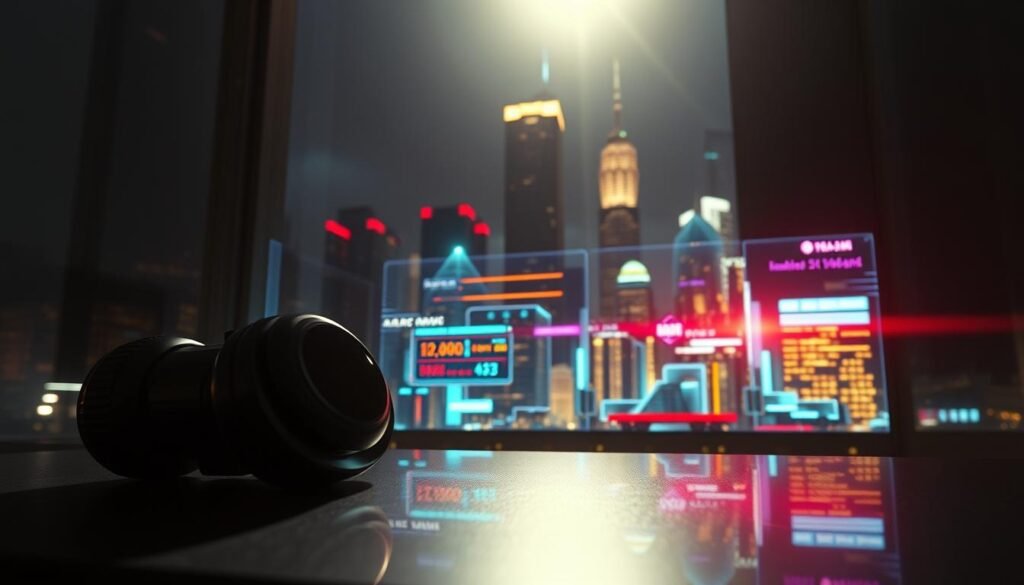Nearly 80% of internet traffic will be video by 2025—a striking signal that visual storytelling now rules online engagement.
VFX for Advertising opens up new creative possibilities. It lets brands show dragons over city skylines or seamless product transformations. This is all done without building costly sets.
Visual effects for ads use CGI, 3D animation, green-screen compositing, and motion graphics. They create scenes that are safe, cost-effective, and memorable.
Video dominance and marketers’ reliance on visuals mean investing in advertising VFX solutions aligns with audience habits and attention patterns. Tools like Maya and Houdini for modeling, and Unreal Engine for real-time scenes, make complex work practical.
AI and real-time pipelines are shrinking production time. AI rotoscoping, neural denoisers like NVIDIA OptiX, and services such as Runway ML speed tasks like object removal, tracking, and texture generation. This democratizes high-end visual effects for ads, letting smaller studios compete on creativity and speed.
For collaboration or inquiries about our advertising VFX solutions, reach us at info@digiverse.studio.
Introduction to VFX in Advertising
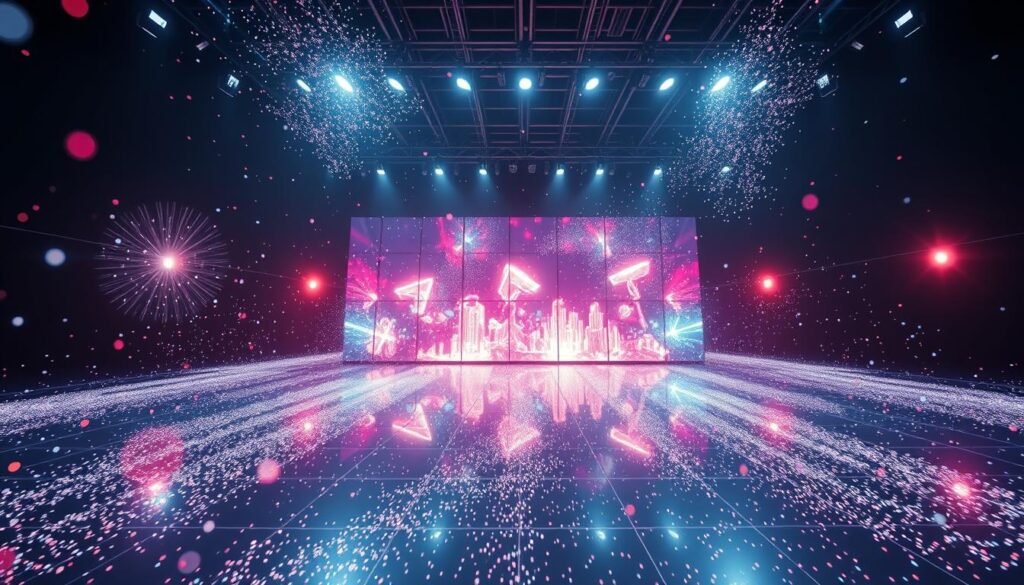
We look at how visual effects change modern ads. They go from small clips to big brand films. This intro explains the main techniques, why they’re important, and how teams mix art and tech for unforgettable work.
What Are Visual Effects?
Visual effects combine live-action footage with computer graphics. This creates scenes that can’t be filmed live. The process includes CGI, 3D models, and digital compositing.
It also involves motion capture, rotoscoping, and simulating things like fluids and fire. VFX is different from practical effects, which are done on set. Our teams use digital VFX to make these elements work together smoothly.
Importance of VFX in Today’s Digital Era
People watch a lot of visual content online. This makes visual effects for ads very important. They make ads more memorable, tell stories better, and help brands get noticed.
VFX now uses AI for tasks like rotoscoping and denoising. This is done on special hardware. Real-time engines like Unreal help make quick changes, speeding up the creative process.
By blending movie-making skills with digital VFX, ads can show off products, create immersive worlds, and make big launch films. These ads do well in online videos and social media, where grabbing attention fast is key.
Enhancing Brand Storytelling with VFX
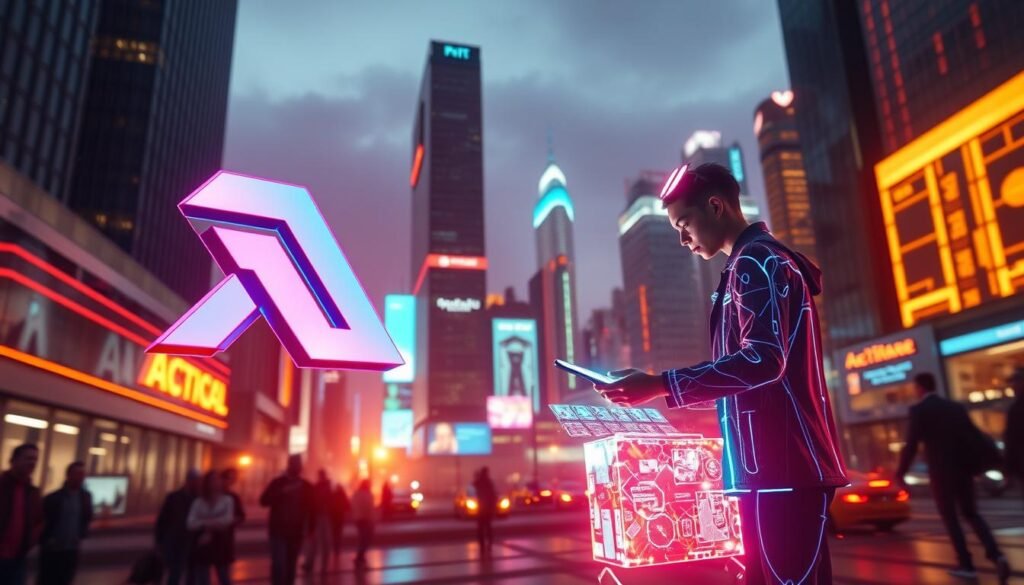
We turn ideas into memorable scenes through visual storytelling. VFX animation for ads shows brand values as living images. This makes abstract traits tangible and easy to remember.
Motion, color, and timing create emotional connections. Motion grabs attention right away. Color sets the mood. Short bursts of special effects can trigger memory and empathy quickly.
Creating Emotional Connections
We create characters and environments that carry meaning. A product becomes a companion, a brand a place. VFX animation supports these visuals without losing believability.
Visual Narratives That Captivate Audiences
Visual effects for ads use film tools like set extensions and de-aging. These tools make complex stories fit into short formats. This keeps viewers engaged.
For technical teams, blending CGI into live footage is key. We use photogrammetry, HDRI lighting, and motion tracking for this. AI-assisted texturing and neural rendering help achieve photorealism, allowing artists to focus on the story and emotions.
| Use Case | VFX Technique | Audience Effect |
|---|---|---|
| Holiday brand film | Set extension, particle systems | Warmth, nostalgia, shareability |
| Cinematic product launch | Digital doubles, HDRI lighting | Believability, prestige, recall |
| Social media micro-story | Motion graphics, neural rendering | Instant engagement, repeat views |
| Experiential pop-up ad | AR overlays, photogrammetry | Interactivity, longer dwell time |
The Impact of VFX on Consumer Engagement
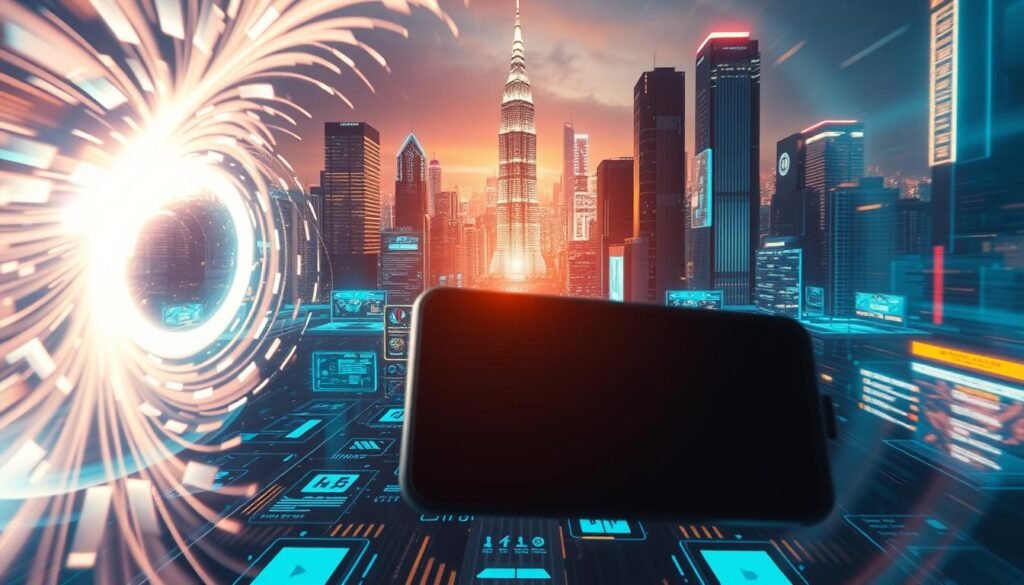
We explore how visual effects change how people interact with ads. Attention is rare in feeds. Eye-catching VFX can make viewers pause, swipe less, and click more.
Brands that use VFX for Advertising get more attention at first. This is thanks to motion, contrast, and unexpected motion paths.
Eye-Catching Visuals Drive Attention
Short bursts of dynamic CGI and motion graphics grab attention. Particle systems, bold transitions, and color pops make ads stand out. Platforms favor originals with polished VFX solutions, leading to more clicks and views.
Improving Retention Rates with Stunning Graphics
Ads are remembered better when visuals support a clear story. High-quality VFX for marketing, tied to brand cues, boosts recall. Studies show visual stories are remembered better than text-only messages, aiding long-term brand recognition.
Technical choices affect outcomes. AI-driven frame interpolation and upscaling improve playback on mobile devices. Photoreal CGI and refined motion graphics reduce artifacts, keeping focus on the message. These choices make VFX solutions work better across platforms.
Brands should track engagement with specific metrics: view completion, time-on-ad, CTR, and post-view brand lift. A/B testing different cuts and codecs, plus platform-specific aspect ratios, shows what drives action. We suggest combining creative tests with analytics to boost ROI from post-production VFX for marketing.
Types of Visual Effects Used in Advertising
We use many visual techniques to meet creative goals and budgets. For short spots and social reels, we use simple, quick methods. For premium campaigns, we create photo-real renders and immersive experiences. Both methods use studio pipelines that balance speed, cost, and quality.
2D vs. 3D Animation
2D animation and motion graphics are great for ads that explain things and show brand identity. They are cheaper and faster to make. At a VFX studio, teams create animated infographics and kinetic typography that works well on mobile.
3D animation adds depth and realism for showing products and demos. It lets viewers see materials, finishes, and lighting in ways live shoots can’t. High-end commercials use 3D to create scenes that would be too expensive or impossible to film.
Motion Graphics and Their Applications
Motion graphics mix graphic design and animation. They are used for overlays, callouts, and animated product specs. Brands like Apple and Nike use motion to highlight form and function. Graphic design studios now include VFX animation to make promotional pieces look polished.
Motion graphics are used for kinetic typography, data visualization, and social-format reels. They make ads clearer and more memorable while keeping production simple. Motion packages help with quick testing and A/B creative cycles.
Augmented Reality (AR) in Ads
AR adds interactive try-ons, virtual product placement, and filters that increase engagement. Fashion and beauty ads use try-on experiences on Instagram and Snapchat to make buying easier. AR combines VFX with real-time engines for convincing overlays.
Technical needs are key: models must be optimized, lighting baked, and tested on different devices. Generative AI can speed up turning 2D references into 3D assets. Teams focus on CGI effects in advertising to ensure assets work well at runtime and track well.
| Effect Type | Best Use | Typical Cost | Turnaround | Key Technical Notes |
|---|---|---|---|---|
| 2D Animation | Explainers, branding, social ads | Low–Medium | Fast | Vector assets, rapid iteration, lighter render needs |
| 3D Animation | Product visualization, experiential spots | Medium–High | Medium–Long | Photoreal texturing, lighting, camera matching |
| Motion Graphics | Data, overlays, kinetic typography | Low–Medium | Fast | Template-driven workflows, brand consistency |
| Augmented Reality | Try-ons, interactive product demos | Medium–High | Medium | Low-poly models, baked lighting, device testing, real-time engines |
| Photoreal CGI | High-end commercials, environment builds | High | Long | Advanced rendering, compositing, color grading |
The Role of VFX in Different Industries
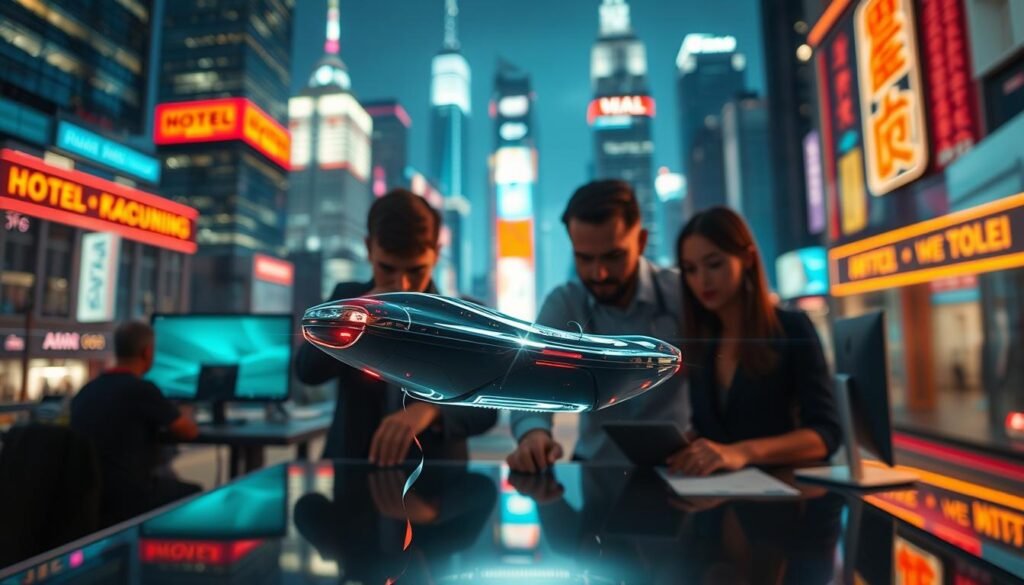
We see how visual effects change different markets. From new electronics to fashion shows and food ads, each field uses special techniques. These include photoreal renders, facial capture, and procedural simulations.
These methods help solve production problems and tell brand stories better. They let teams quickly test ideas and control every visual aspect.
Technology and Electronics
We use photoreal rendering and neural upscaling to show product details and future visions. 3D renders and AR demos replace expensive prototypes. This speeds up the development process for brands like Apple and Samsung.
Special effects for ads help us animate interfaces and show thermal maps. This makes complex specs easy for engineers and consumers to understand. These VFX solutions create a sleek, futuristic look without needing physical mockups.
Fashion and Beauty
We use facial capture, virtual try-ons, and beauty filters to create personalized experiences. Brands like Sephora and Estée Lauder benefit from this. Motion graphics and CGI enhance texture and lighting on clothes and makeup.
Visual effects for ads allow for de-aging and virtual fittings that respect all skin tones and body types. These special effects for ads make campaigns better and reduce the need for many on-set retakes.
Food and Beverage Advertising
We use hyperrealistic CGI and procedural simulations to make food look perfect. Ads for Coca-Cola or Nestlé often show pouring liquids, steam, and crumb textures without the mess of real kitchens or spoilage.
Advertising VFX solutions save money and give complete creative control. Every detail, from droplets to steam, can be adjusted at the pixel level. Visual effects for ads turn food ideas into appealing visuals every time.
In all areas, we match the right technique to the need. For electronics, it’s photoreal rendering. For beauty, it’s AR and facial capture. For food, it’s procedural fluids. This targeted use of special effects for ads brings clarity, reduces risk, and opens up new creative paths.
Cost Considerations for VFX
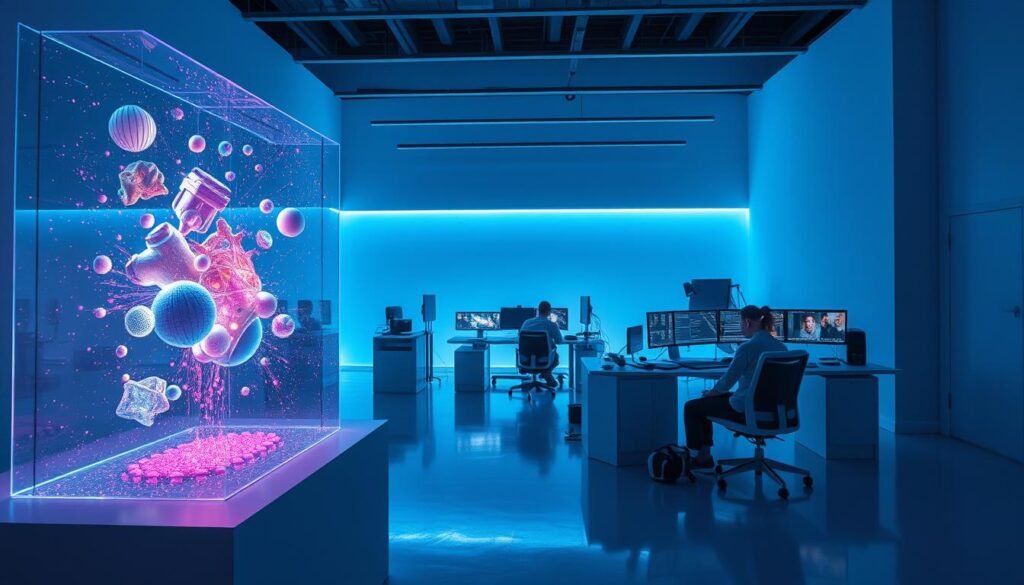
We help teams plan budgets for visual effects. Visual effects range from simple motion graphics to complex 3D scenes. Knowing the difference helps us pick the right tools and talent for each project.
Budgeting for Quality Visual Effects
We start by looking at how complex a project is. Simple 2D work costs less than complex 3D scenes. Spending more on creative direction often leads to better results.
AI tools can speed up tasks like rotoscoping and tracking. This lets us focus on making the visuals even better. Using Unreal for both previs and final output saves time and money.
Return on Investment (ROI) Analysis
We track ROI by looking at how well ads perform. Ads with great visuals tend to get more views and shares. This means they work harder for your money.
Engineering teams need to budget for cloud computing and AI. It’s important to plan for these costs early. This way, you can choose the best option for your budget.
Practical cost-saving tactics:
- Use real-time engines for iterative approvals and final renders.
- Leverage AI denoisers and automated roto to cut manual hours.
- Adopt pre-built assets for non-hero elements to free artists for key frames.
- Partner with a VFX studio for commercials that balances in-house and freelance talent.
- Engage post-production VFX for marketing early in creative development to reduce rework.
We suggest doing small tests with a trusted VFX partner. This helps you understand costs and predict success before scaling up. Tracking results helps plan for future projects.
Trends Shaping VFX in Advertising
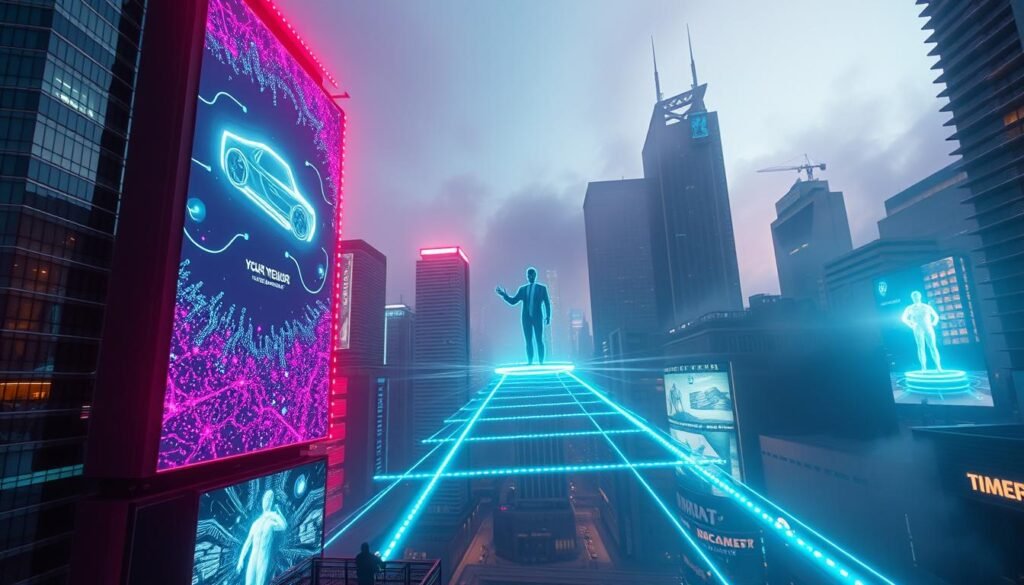
Brands are changing how they create visual experiences. New tools and methods let creative teams work faster. This shift affects how they plan, decide, and finish VFX for ads.
Immersive Experiences and Virtual Reality
Virtual production uses LED stages and live compositing. This lets directors see almost final frames during filming. Techniques from shows like The Mandalorian are now used in ads to change locations and lighting instantly.
VR and interactive brand spaces engage viewers more. We can create immersive VFX for ads. This lets viewers explore products and stories, not just watch them.
The Role of Artificial Intelligence in VFX Production
AI makes tasks like rotoscoping and facial animation faster. Tools like Runway ML, DeepMotion, and MetaHuman Animator help small teams create complex visuals. This means they can do more with less.
Real-time engines like Unreal Engine 5 make fast, photorealistic frames. NVIDIA’s denoisers and DLSS improve quality without slowing down. These tools make AI in VFX very powerful for ad studios and in-house teams.
Democratization and Practical Impact
No-code and AI-driven platforms make VFX accessible to marketers and small studios. Tools like Runway ML and Wonder Dynamics help with quick prototypes for social media and influencer content.
This leads to more creativity, experimentation, and use of immersive VFX in ads. It’s changing how campaigns and channels work.
Case Studies of Successful VFX Campaigns
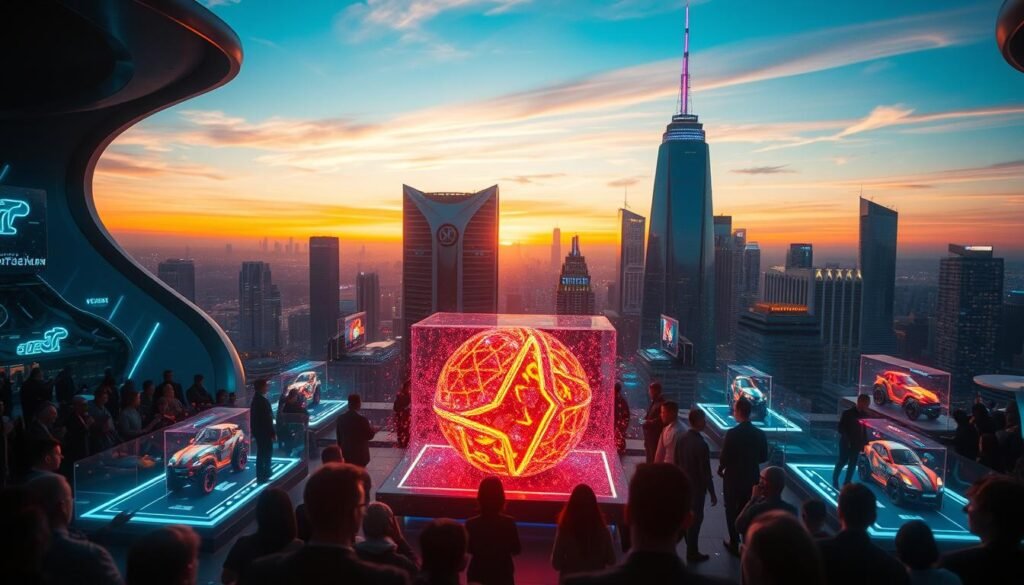
We look at famous campaigns that show how VFX changes ads into cultural hits. Brands used movie magic from Jurassic Park and The Matrix to make ads feel huge and real. These examples set the bar for VFX in ads.
Coca-Cola’s holiday ads are a great example of emotional storytelling. They mix high-quality visuals with simple stories to get more shares and improve brand feelings. This shows why a good VFX studio for commercials must balance big visuals with emotional depth.
Quick, viral ads that use bold CGI and short clips work well on TikTok and Instagram. These ads are made to grab attention and be remixed easily. They show that combining technical skill with a strong story can make a big impact.
We learn from these examples. Use the right amount of VFX based on your goals. For real products, go for photorealism. For social media, choose bold, interactive CGI. Always check how your ad is doing and make changes as needed.
We compare different campaign types and their results. The table below shows how to choose between big, cinematic ads and quick, social media hits. It also tells when to use a professional VFX studio or your own team.
| Campaign Type | Core VFX Approach | Platform Fit | Key Metric |
|---|---|---|---|
| Brand-defining cinematic spot | High-end photoreal CGI effects in advertising with layered compositing | Television, YouTube, premium OTT | Brand lift and sentiment |
| Seasonal emotional campaign | Warm, narrative-driven VFX animation for advertising and practical effects | Broadcast and social sharing | Share rate and brand recall |
| Viral social-first spot | Stylized motion graphics and AR filters produced by a nimble VFX studio for commercials | TikTok, Instagram Reels, YouTube Shorts | Engagement rate and virality |
| Product authenticity push | Subtle CGI effects in advertising for realistic demo and close-ups | Ecommerce pages and shoppable video | Conversion and return on ad spend |
Collaborating with VFX Professionals
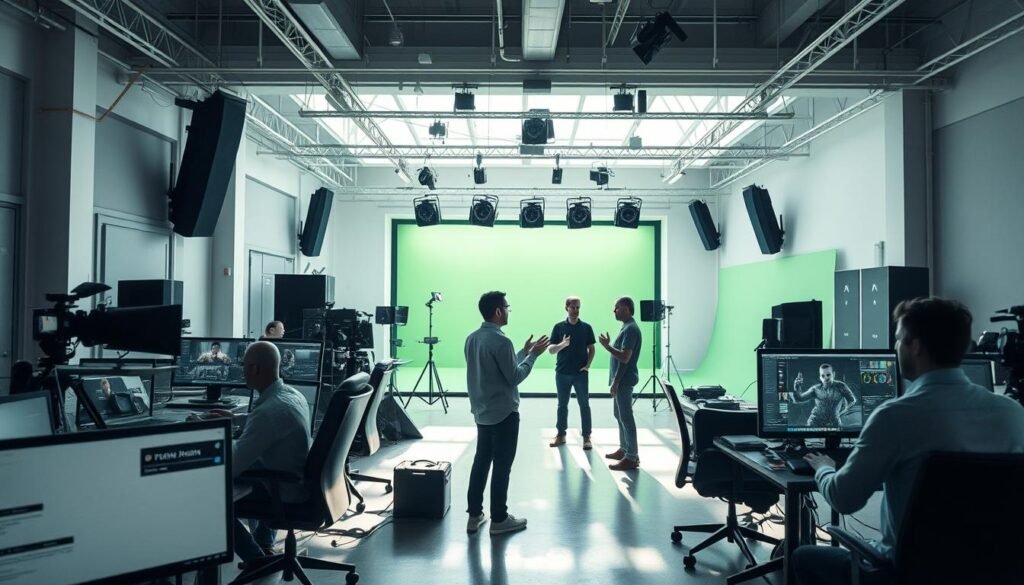
We see collaboration as a partnership. We aim for clear goals, a shared language, and mutual respect. This sets the stage for strong creative work. Choosing the right team reduces risk, speeds up production, and boosts the chances of a successful campaign.
Finding the Right VFX Studio for Your Brand
Don’t just look at the fancy reels. Check if the studio has experience in your industry, like fashion, electronics, or food. Make sure they have the tech you need for quick work, like real-time engines and AI tools.
Ask for clear process documents. Want to see past budgets, timelines, and what they delivered? This shows if they can meet your needs and goals.
The Creative Process: Working Together for Best Results
Begin with a clear brief that outlines your brand goals, target KPIs, and technical limits. Early planning and look-dev phases help avoid costly reworks.
Use a modern pipeline that brings together directors, VFX supervisors, artists, and engineers. Tools like version control and cloud feedback help keep things moving smoothly. AI can handle the routine tasks, so your team can focus on the creative aspects.
Make a checklist to protect your project. Check licensing for third-party assets and AI models, estimate cloud costs, and understand IP terms. For more information or to discuss a project, email info@digiverse.studio.
| Checklist Item | Why It Matters | How to Verify |
|---|---|---|
| Relevant Portfolio | Shows domain knowledge and audience fit | Review case studies in fashion, electronics, food |
| Technical Capabilities | Determines feasibility for fast turnarounds | Confirm real-time engines, render farm access, AI tools |
| Process Transparency | Reduces surprises in schedule and cost | Request breakdowns of budgets, timelines, deliverables |
| Licensing & IP | Protects brand ownership and legal exposure | Review asset licenses and IP clauses in contracts |
| Review Workflow | Enables clear feedback loops and faster approvals | Confirm use of dailies, cloud review tools, version control |
| Cost Forecast | Keeps ROI targets realistic | Ask for cloud compute estimates and contingency buffers |
| Service Scope | Defines deliverables and responsibilities | Ensure advertising VFX solutions and digital VFX services are listed in scope |
Future Predictions for VFX in Advertising
We’re seeing a big change in how brands share their messages. New tech like real-time rendering and AI is making ads more personal. This means ads can change based on who’s watching and what they’re using.
Ads are getting more real-time and personal. Platforms like Instagram and YouTube will show ads that adjust to what you like. This includes changing colors and adding 3D elements based on your preferences.
Generative tools will soon make many versions of an ad from just one idea. This will help brands like Nike and Samsung test different looks before they go live.
Studios will use Unreal Engine and cloud rendering to make CGI ads faster and more personal. This will help brands quickly try out different versions of their ads.
Emphasizing Ethical Use of Visual Effects
New tech raises big questions about ethics. Things like deepfakes and digital doubles can blur lines about truth and consent. We need clear rules about when and how to use these tools.
AI in VFX will need its own set of rules. Legal and creative teams will have to make sure ads are honest and fair. This will keep viewers trusting what they see.
Teaching the next generation is key. Schools should focus on AI, real-time production, and ethics. This will help artists stay important while learning about new tech and rules.
The future of VFX in ads is about working together. Humans will set the story and rules, while AI helps make it happen fast. When done right, visual effects can really connect with people without losing their integrity.
Conclusion: Embracing VFX for Advertising Success
VFX for Advertising is more than just decoration. It’s a key strategy that makes stories more engaging and opens up new creative paths. By using post-production VFX and AI, teams can work faster and create visuals that stick in people’s minds.
As educators, engineers, and marketers, we should use VFX to teach, test ideas, and grow campaigns. Investing in training, the right tools, and partnerships can make visual dreams a reality. This approach keeps things ethical and true to the brand.
For those looking to add cinematic effects to their ads, check out digital VFX services and experienced partners. If you want to talk about creating imaginative and technically sound campaigns, contact us at info@digiverse.studio.

